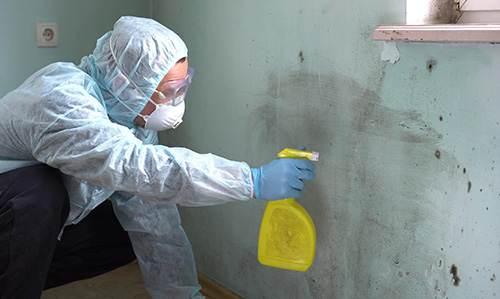
Is Mold in the Workplace Hurting Your Bottom Line?
Mold is nearly everywhere. The Occupational Safety and Health Administration reports there are approximately 1,000 different mold species in the United States and 100,000 known species worldwide . Mold can grow just about anywhere that water, oxygen and organic materials, such as wood, paper, food or insulation are present. Water leaks, high humidity and poor ventilation are some of the conditions that promote mold growth.
Mold in the workplace is a serious issue. Left untreated, it can result in an employee illness or property damage. From a health perspective, mold exposure has been linked to several adverse conditions, ranging from asthma to acute upper respiratory tract symptoms. Over time, it can weaken or damage wooden structures, such as flooring, furniture and building frames.
Here are four ways business owners can prevent mold in the workplace and protect their buildings and employees from its harmful effects.
- Identify problem areas and root causes. Pinpoint trouble spots where mold is present to determine the cause, making sure to look on the floor as well as the ceilings and walls. Mold can be caused by moisture from the ground, water through a leaky window, improper gutter placements, poorly maintained HVAC systems, or plumbing issues. In many cases, the conditions that cause mold growth can be corrected easily, and remediation can effectively remove mold damage. The Environmental Protection Agency’s (EPA) publication “Mold Remediation for Schools and Commercial Buildings” provides good recommendations that should be followed when addressing a mold issue.4
- Control moisture. This is the most important part of inhibiting mold growth. Business owners should check for unusual condensation and wet spots, especially near kitchens, bathrooms and around wash stations. Water leaks and broken pipes should be fixed quickly to prevent further building damage and not become a breeding ground for mold. If materials like floorboards or drywall are damaged, they should be removed and replaced to help prevent future mold growth. Use a dehumidifier to control indoor moisture. Ideally, indoor humidity should remain below 70 percent of the moisture in the air.5
- Maintain heating and cooling equipment. A business’s HVAC system is critical to controlling mold in the workplace. Properly installed and maintained HVAC systems reduce the likelihood that mold will be transported throughout the building. Once a year, business owners should hire a professional technician to conduct an overall equipment inspection and look for signs of wear or damage, fix air leaks, and clean and adjust the dampers. Twice a year, the technician also should inspect fan, belt and bearing operations, and fix any air leaks to keep the system operating properly.
- Provide adequate drainage. Inadequate drainage issues are both common and serious problems. While they can usually be repaired for a few hundred dollars, unresolved or undetected drainage problems can easily cost upwards of several thousand dollars. Business owners should routinely walk around buildings, noting sloping grounds or areas of poor drainage, or where water is pooling. French drains and downspout adapters are two common remedies contractors can use to retrofit buildings and fix drainage issues.
As with any problem that potentially impacts business operations and employees’ safety and health, it is important to keep the lines of communication open. Workers should know what to look for and have a way to alert managers if they suspect harmful mold may be present. Business owners should take mold complaints seriously and have them investigated and quickly remedied, as necessary, by professionals. For more information on how to prevent mold in the workplace, contact OSHA or the EPA.
